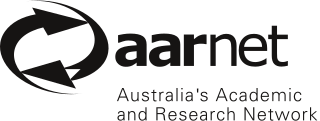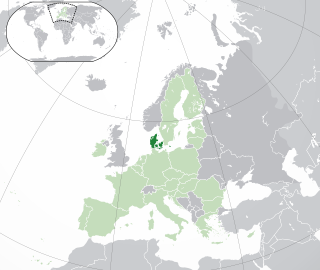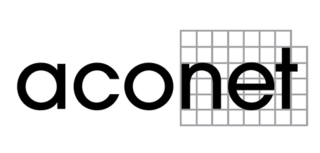Related Research Articles

Janet is a high-speed network for the UK research and education community provided by Jisc, a not-for-profit company set up to provide computing support for education. It serves 18 million users and is the busiest National Research and Education Network in Europe by volume of data carried. Previously, Janet was a private, UK-government funded organisation, which provided the JANET computer network and related collaborative services to UK research and education.

A wide area network (WAN) is a telecommunications network that extends over a large geographic area. Wide area networks are often established with leased telecommunication circuits.
The National Science Foundation Network (NSFNET) was a program of coordinated, evolving projects sponsored by the National Science Foundation (NSF) from 1985 to 1995 to promote advanced research and education networking in the United States. The program created several nationwide backbone computer networks in support of these initiatives. Initially created to link researchers to the NSF-funded supercomputing centers, through further public funding and private industry partnerships it developed into a major part of the Internet backbone.

Internet access is a facility or service that provides connectivity for a computer, a computer network, or other network device to the Internet, and for individuals or organizations to access or use applications such as email and the World Wide Web. Internet access is offered for sale by an international hierarchy of Internet service providers (ISPs) using various networking technologies. At the retail level, many organizations, including municipal entities, also provide cost-free access to the general public.
A leased line is a private telecommunications circuit between two or more locations provided according to a commercial contract. It is sometimes also known as a private circuit, and as a data line in the UK. Typically, leased lines are used by businesses to connect geographically distant offices.
CARNET is the national research and education network of Croatia. It is funded from the government budget and it operates from offices in Zagreb and five other cities.

AARNet provides Internet services to the Australian education and research communities and their research partners.

FUNET is the Finnish University and Research Network, a backbone network providing Internet connections for Finnish universities and polytechnics as well as other research facilities. It is governed by the state-owned CSC – IT Center for Science Ltd. The FUNET project started in December 1983 and soon gained international connectivity via EARN with DECnet as the dominant protocol. FUNET was connected to the greater Internet through NORDUnet in 1988. The FUNET FTP service went online in 1990, hosting the first versions of Linux in 1991.
Optical Carrier transmission rates are a standardized set of specifications of transmission bandwidth for digital signals that can be carried on Synchronous Optical Networking (SONET) fiber optic networks. Transmission rates are defined by rate of the bitstream of the digital signal and are designated by hyphenation of the acronym OC and an integer value of the multiple of the basic unit of rate, e.g., OC-48. The base unit is 51.84 Mbit/s. Thus, the speed of optical-carrier-classified lines labeled as OC-n is n × 51.84 Mbit/s.
The Corporation for Education Network Initiatives in California is a nonprofit corporation formed in 1997 to provide high-performance, high-bandwidth networking services to California universities and research institutions. Through this corporation, representatives from all of California's K-20 public education combine their networking resources toward the operation, deployment, and maintenance of the California Research and Education Network, or CalREN. Today, CalREN operates over 8,000 miles of fiber optic cable and serves more than 20 million users.

Fiber to the x or fiber in the loop is a generic term for any broadband network architecture using optical fiber to provide all or part of the local loop used for last mile telecommunications. As fiber optic cables are able to carry much more data than copper cables, especially over long distances, copper telephone networks built in the 20th century are being replaced by fiber.

SURF is an organization that develops, implements and maintains the national research and education network (NREN) of the Netherlands. It operates the national research network formally called SURFnet.

A core router is a router designed to operate in the Internet backbone, or core. To fulfill this role, a router must be able to support multiple telecommunications interfaces of the highest speed in use in the core Internet and must be able to forward IP packets at full speed on all of them. It must also support the routing protocols being used in the core. A core router is distinct from an edge router: edge routers sit at the edge of a backbone network and connect to core routers.
Internet access is widely available in New Zealand, with 94% of New Zealanders having access to the internet as of January 2021. It first became accessible to university students in the country in 1989. As of June 2018, there are 1,867,000 broadband connections, of which 1,524,000 are residential and 361,000 are business or government.

In an international context Denmark is viewed as a somewhat peculiar country when it comes to internet access. The former state owned telephone company TDC owns the entire last mile infrastructure in terms of copper telephone lines and the vast majority of the coaxial cable infrastructure as well. Even though the Danish telecommunications infrastructure is very heavily dominated by one company, Danish internet customers still enjoy fair prices and a wide availability of different next generation access internet connections in comparison with most other EU countries. Furthermore, TDCs de facto monopoly on last mile infrastructure has come under attack. In the last decade regional power companies have formed national business alliances aimed at implementing FTTH for private and business end users.
The prevalent means of connecting to the Internet in Germany is DSL, introduced by Deutsche Telekom in 1999. Other technologies such as Cable, FTTH and FTTB (fiber), Satellite, UMTS/HSDPA (mobile) and LTE are available as alternatives.

Gigabit wireless is the name given to wireless communication systems whose data transfer speeds reach or exceed one gigabit per second. Such speeds are achieved with complex modulations of the signal, such as quadrature amplitude modulation (QAM) or signals spanning many frequencies. When a signal spans many frequencies, physicists refer that a wide bandwidth signal. In the communication industry, many wireless internet service providers and cell phone companies deploy wireless radio frequency antennas to backhaul core networks, connect businesses, and even individual residential homes.

Merit Network, Inc., is a nonprofit member-governed organization providing high-performance computer networking and related services to educational, government, health care, and nonprofit organizations, primarily in Michigan. Created in 1966, Merit operates the longest running regional computer network in the United States.

ACOnet is the name of the national research and education network in Austria. The ACONET association promotes the development and use of that network. ACOnet is not managed and operated by ACONET, but by a unit in the Computing Centre of the University of Vienna that also operates the Vienna Internet Exchange. The University of Vienna represents ACOnet internationally, for example as a member of TERENA and as a participant in the project that funds the European backbone network GÉANT.
Missouri Research and Education Network (MOREnet) is a member-driven consortium, operating as a separate business unit within the University of Missouri in Columbia, Missouri. They are primarily made up of Missouri's K-12 schools, colleges and universities, public libraries and government organizations. In addition to maintaining a computer network for Internet access to school districts and libraries in the U.S. state of Missouri. they also provide technology consulting, a technology help desk as well as professional development and training, consortium discounts and a la carte services by a team of approximately 85 subject matter experts.
References
- ↑ Leasure, Jen. "OARnet Hosts National Meeting Of Networking Community" . Retrieved 13 February 2014.
- ↑ "Delegated Subdomains". Neustar. Archived from the original on February 20, 2009.
- ↑ Petro, Jim. "Chancellor Petro Announces Creation of Ohio Technology Consortium (OH-TECH) Share" . Retrieved 13 February 2014.
- ↑ Ghose, Carrie. "Miami U. gives 'in the Net' new meaning". American City Business Journals. Retrieved 12 August 2014.
- ↑ Jackson, William. "Two states climb aboard new, 100-gigabit fast train". GCN (Government Computer Networks). Retrieved 13 February 2014.
- ↑ "The Computerworld Honors Program - Ohio Academic Resources Network" (PDF). ComputerWorld. Retrieved 13 February 2014.
- ↑ "Case Western Reserve University becomes first university to upgrade to Ohio's 100-gigabit network" . Retrieved 13 February 2014.